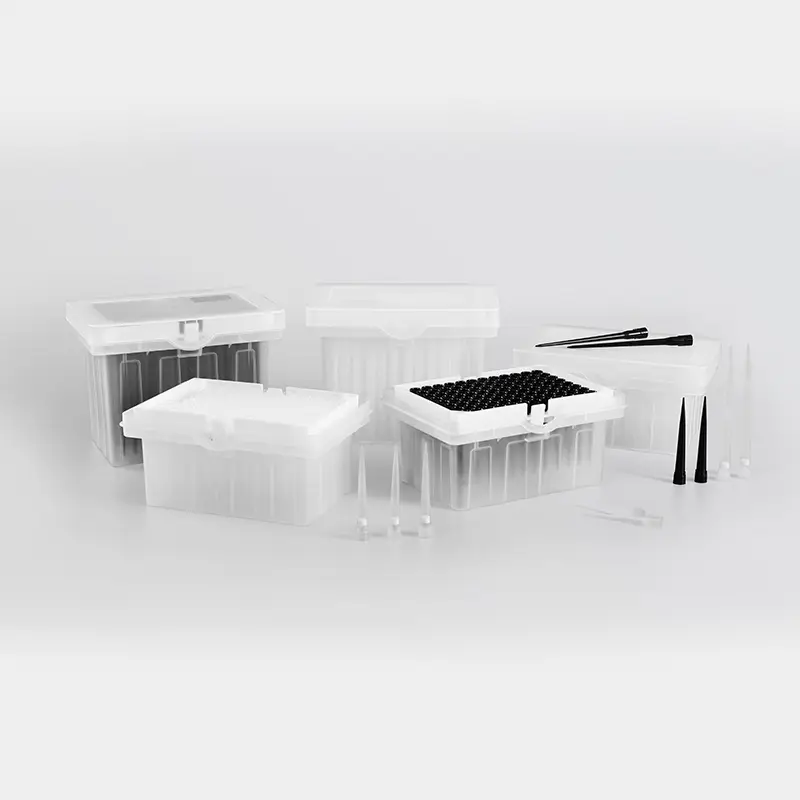Why Are Pipette Tips Essential in Scientific Research and Laboratory Work?
2024-12-30
Pipettes are a fundamental tool in many laboratories, from academic research facilities to medical and pharmaceutical industries. But have you ever wondered about the small yet crucial accessory that goes along with them—the pipette tip? These seemingly simple pieces of plastic play a pivotal role in ensuring accuracy and reliability in liquid handling. In this blog, we’ll explore why pipette tips are essential in scientific research and laboratory work.
What Are Pipette Tips?
Pipette tips are disposable plastic attachments used on pipettes to draw and dispense liquid samples. They are typically made from high-quality polypropylene to ensure clarity, chemical resistance, and low protein binding. The size and design of pipette tips are varied to fit different pipette models and accommodate various sample volumes.
These tips are designed to fit snugly onto the end of a pipette, ensuring a secure seal that prevents leaks and contamination. After each use, pipette tips are discarded to avoid cross-contamination between samples.
Why Are Pipette Tips Important in Laboratories?
1. Precision and Accuracy in Liquid Handling
Pipette tips are designed to be precision instruments that ensure the correct volume of liquid is transferred. Their shape and material are engineered to prevent inaccuracies that could occur during dispensing. With pipette tips, researchers and lab technicians can measure and transfer liquids with the utmost precision, ensuring reproducibility in experiments.
2. Prevention of Cross-Contamination
One of the primary reasons pipette tips are essential is that they help prevent cross-contamination between samples. Since these tips are disposable, each new sample gets a clean tip, reducing the risk of contamination from previous experiments. This is especially crucial in experiments involving sensitive or valuable samples, where even the smallest contamination could skew results.
3. Improved Safety
Using disposable pipette tips ensures safety in the laboratory by eliminating the need for cleaning between uses. Cleaning reusable pipettes can be time-consuming and challenging, especially when working with hazardous or biological substances. Disposable pipette tips, on the other hand, reduce the risk of accidental exposure to potentially harmful chemicals or pathogens.
4. Enhanced Consistency
Reproducibility is one of the cornerstones of scientific research, and pipette tips play a crucial role in maintaining consistency across experiments. With uniform size and design, pipette tips ensure that each liquid transfer is performed consistently, leading to reliable results and greater confidence in experimental outcomes.
5. Cost-Effectiveness in the Long Run
While purchasing disposable pipette tips may seem like an added expense, they save significant time and labor costs in the long run. Instead of spending time cleaning and sterilizing reusable tips, researchers can simply discard them and move on to the next task. Additionally, disposable tips minimize the likelihood of expensive mistakes caused by cross-contamination or inaccurate measurements.
What Are the Different Types of Pipette Tips?
1. Standard Tips
Standard tips are the most commonly used in laboratories and fit most types of pipettes. They are available in various sizes and volumes, making them versatile for a wide range of applications.
2. Filtered Tips
Filtered pipette tips are designed with an additional barrier filter to prevent aerosols and contaminants from entering the pipette. These are especially useful in microbiology, genomics, and molecular biology experiments where preventing contamination is crucial.
3. Low-Retention Tips
Low-retention tips are designed with a special coating that reduces the amount of liquid left behind on the tip, improving accuracy and minimizing sample loss. These tips are particularly useful when working with small volumes or expensive reagents.
4. Wide-Volume Tips
Wide-volume tips are used for transferring larger liquid volumes. They are designed to handle a higher volume than standard tips and are often used in applications such as preparing large reagent volumes or during certain clinical testing procedures.
5. Micro Tips
Micro tips are ultra-fine and designed to work with micropipettes. These tips are essential when handling extremely small volumes of liquid with high precision.
Conclusion: The Unsung Hero of Laboratory Work
Pipette tips may seem like small and simple accessories, but their role in scientific research and laboratory work is undeniable. From ensuring accuracy and preventing cross-contamination to improving safety and consistency, these disposable tools are essential for smooth and efficient operations in labs worldwide. So, if you’ve ever wondered why pipette tips are so important, now you know: they are indispensable for achieving reliable, high-quality results in every experiment.
By selecting the right pipette tips for your needs, you can enhance the accuracy and reliability of your work while maintaining a safe, efficient, and cost-effective laboratory environment.



